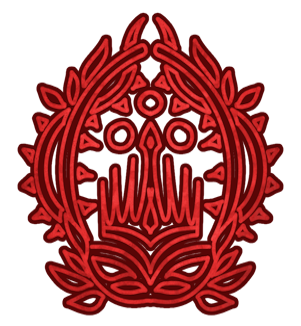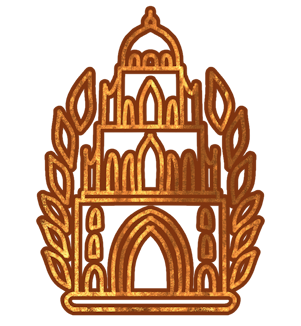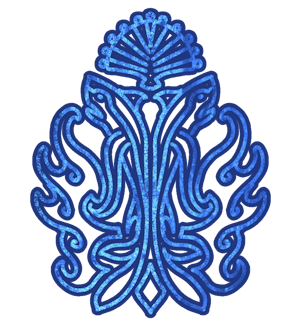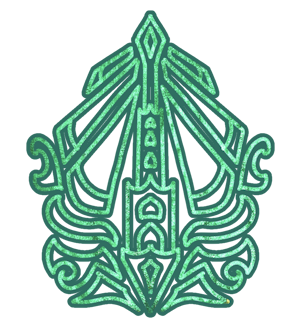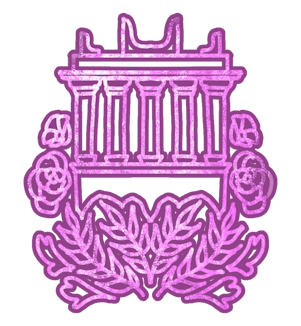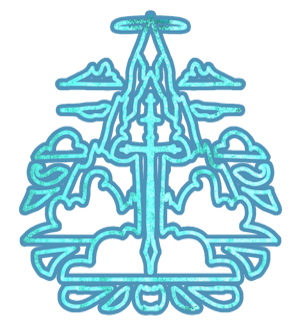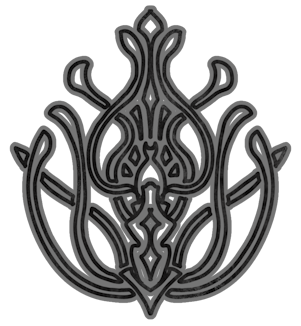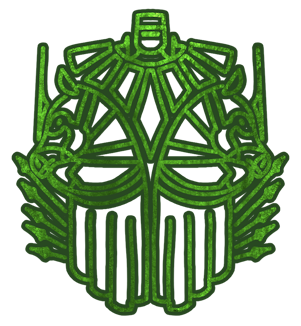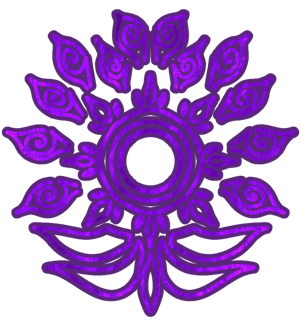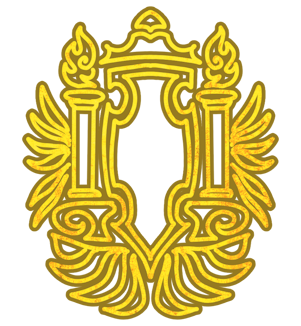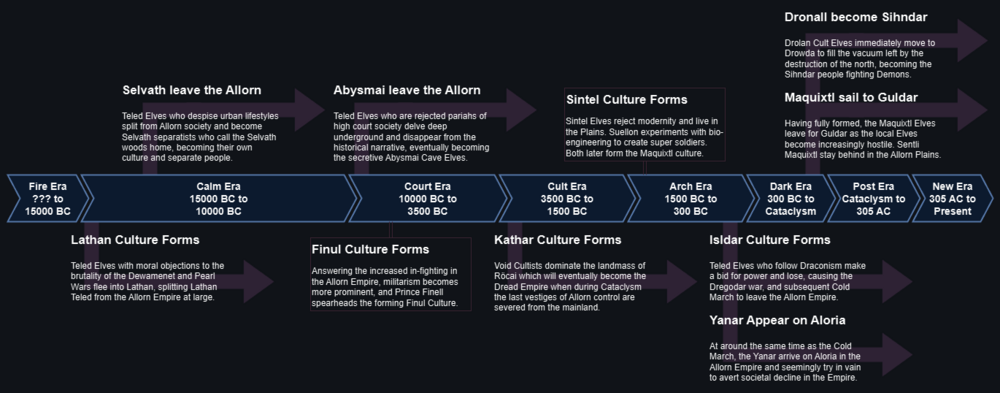More actions
No edit summary |
No edit summary |
||
| (34 intermediate revisions by 2 users not shown) | |||
| Line 2: | Line 2: | ||
|name = Teled | |name = Teled | ||
|test = Teledden (Altalar) | |test = Teledden (Altalar) | ||
|test2 = [[File:Elffl22a.png | |test2 = [[File:Elffl22a.png]] | ||
|test3 = '''Motto:''' "In the | |test3 = '''Motto:''' "In the Footsteps of Ancients" | ||
|image = Df48d0b6e4bc9478d945244941352413.png | |image = Df48d0b6e4bc9478d945244941352413.png | ||
|languages = Altalar | |languages = Altalar | ||
| Line 10: | Line 10: | ||
Teled, sometimes called Teledden or just Elves, are the most commonly found Elves, and inheritors of an ancient legacy of the Allorn Empire, an Elven Empire that lasted for thousands of years. While their Empire eventually fell, the Teled continued to thrive in politics, art, trade, and magic and continued to be the second most populous people across the world of Aloria, only out-classed by the much shorter-lived Ailor. Teled offer an experience in both the traditional fantasy Elf, but also several variations with unique design alterations. | Teled, sometimes called Teledden or just Elves, are the most commonly found Elves, and inheritors of an ancient legacy of the Allorn Empire, an Elven Empire that lasted for thousands of years. While their Empire eventually fell, the Teled continued to thrive in politics, art, trade, and magic and continued to be the second most populous people across the world of Aloria, only out-classed by the much shorter-lived Ailor. Teled offer an experience in both the traditional fantasy Elf, but also several variations with unique design alterations. | ||
== | ==Physical Characteristics== | ||
Teled vary from culture to culture, but can generally be understood to look like traditional Elves with only the Llasada Culture appearing more mer-folk-like with tails, fins, and scales. They have a wide variety of different long/pointed ear shapes, skin tones, and eye | Teled vary from culture to culture, but can generally be understood to look like traditional Elves with only the Llasada Culture appearing more mer-folk-like with tails, fins, and scales. They have a wide variety of different long/pointed ear shapes, skin tones, and eye colors of practically any variation, except the Solvaan who are always blue-tinted in skin tone. When Teled mix with other heritages, their traits are often dominant, resulting in the typical Half-Elven ear-shapes, but generally they are not dissimilar from the other people of Aloria. Most Teled range from the high five feet, to the high range of six feet, with rare cases just barely hitting seven feet. Of the cultures, the Llasada and Pelyon tend to be the largest, while the Minoor and Bel Hammon tend to be shorter. Most Teled live easily to 400 years old, though some have been known to reach 1000 years old with the assistance of Magic. Generally, we recommend that players keep their characters younger than 150 years old. | ||
===Cultures=== | ===Cultures=== | ||
The Teled Elves have over the millennia divided into Cultures much like the Ailor have, with customs and traditions that transcend nationhood. While once most if not all resided within the (old) Allorn Empire, these Cultures express different ways to play a traditional Elf. Below are depicted various Cultures of Teled, hover your cursor over the text to read more about them. You should choose one dominant culture for your Character. | The Teled Elves have over the millennia divided into Cultures much like the Ailor have, with customs and traditions that transcend nationhood. While once most if not all resided within the (old) Allorn Empire, these Cultures express different ways to play a traditional Elf. Below are depicted various Cultures of Teled, hover your cursor over the text to read more about them. You should choose one dominant culture for your Character. | ||
{| | |||
|- | |||
| style="width: 50%; padding: 5px"| | |||
<div class="res-img" style='text-align: left;float: left;width: 20%; padding-right: 5px;'> | |||
[[File:Neoallornemblem.png]] | |||
</div> | |||
'''Neo-Allorn, also known as Imperialist Elves''', hail from nearly all states and nations that have Elves in them, but notably Val Allornavaal. They continue the pro-Magic and Imperial reclamation of the fallen Allorn Empire and re-establish the new Allorn Empire as a world power. Neo-Allorn are gracious, and poised but capable of deep insidious plotting and deceit. They seek conquest and glory for the Estelley Empresses. | |||
| style="width: 50%; padding: 5px"| | |||
<div class="res-img" style='text-align: left;float: left;width: 20%; padding-right: 5px;'> | |||
[[File:Amontaarelf.png]] | |||
</div> | |||
'''Amontaar, also known as Diplomatic Elves''', hail from the city-state of Amontaar, a center of politics, commerce, and diplomacy. As a nexus between Empires, the people of Amontaar have always had to cultivate social networks and connections, a willingness to listen, and to pragmatically act and mediate to preserve their independence. Amontaar Teled frequently travel to Regalia to do political or economic business, a city like their own. | |||
|- | |||
| style="width: 50%; padding: 5px"| | |||
<div class="res-img" style='text-align: left;float: left;width: 20%; padding-right: 5px;'> | |||
[[File:Finul emblem.png]] | |||
</div> | |||
'''Finul, also known as Maritime Elves''', follow the example of Empress Finell, the patron of Bel Faiaal, who was a renowned sailor and passionate lover enjoying the good life. The Finul have abandoned the haughty and poised Allorn disposition in favor of wild, loud, and excitedly intimate or passionate expressions. The Finul can be found in any port, anywhere the sea touches, including Regalia, a great maritime focused Empire. | |||
| style="width: 50%; padding: 5px"| | |||
<div class="res-img" style='text-align: left;float: left;width: 20%; padding-right: 5px;'> | |||
[[File:Belhammonelf.png]] | |||
</div> | |||
'''Bel Hammon, also known as Scholar Elves''', hail from the similarly named hermit-kingdom, a magic-focused state with power that secures itself through dubious means. The Bel Hammon are mistrusted by the wider world, even denounced as evil immoral warlocks and scientists who don't care for the value of life or morals in their pursuit for magical power. Their magical cabal even reaches Regalia, where they too experiment. | |||
|- | |||
| style="width: 50%; padding: 5px"| | |||
<div class="res-img" style='text-align: left;float: left;width: 20%; padding-right: 5px;'> | |||
[[File:Minooremblem.png]] | |||
</div> | |||
'''Minoor, also called Communal Elves''', hail from Minoor Leria, a land where they have rejected nationhood, empires, and wealth. The Minoor live by the needs and capabilities of its people, a rural paradise from which the locals preach a return to simplicity and cooperative philosophy, and to reject approaching modernity. Many of them proselytize their own ideology in faraway lands, hoping to convince others to abandon violence. | |||
| style="width: 50%; padding: 5px"| | |||
<div class="res-img" style='text-align: left;float: left;width: 20%; padding-right: 5px;'> | |||
[[File:Solvaanemblem.png]] | |||
</div> | |||
'''Solvaan, also called Warden Elves''', are descendants of colonists who traveled far east to Solleria, a land shrouded in monster-filled mists, where they eventually integrated into the Ailor Regalian Empire, and became a cornerstone of its political and military landscape. The Solvaan are hunters and mercenaries, protectors of the people, and those who rejected the Allorn Empire's isolation in favor of cooperation with other peoples. | |||
|- | |||
| style="width: 50%; padding: 5px"| | |||
<div class="res-img" style='text-align: left;float: left;width: 20%; padding-right: 5px;'> | |||
[[File:Llasadaemblem.png]] | |||
</div> | |||
'''Llasada, also called Cutthroat elves''', are feared across the high seas. They were once Finul but were inspired by Prince Larason to turn away from Estelley worship, and to the Deep Will, an oceanic-horror faith. The Llasada are nearly exclusively pirates, corsairs, and cutthroats, taking from the weak what they can get their hands on, with their might-makes-right philosophy. They have even given their body to the sea as merfolk. | |||
| style="width: 50%; padding: 5px"| | |||
<div class="res-img" style='text-align: left;float: left;width: 20%; padding-right: 5px;'> | |||
[[File:Pelyonemblem.png]] | |||
</div> | |||
'''Pelyon, also called Knightly Elves''', are strongly intermingled with the Ailor in the similarly named lands, a chivalric knighthood-obsessed people who worship the concept of might-makes-right and have long abandoned delicateness in favor of brutishness. Their people serve in large mercenary armies, baptized in warfare, while their coin is spent on personal luxuries. The majority serve Regalia in faith and war. | |||
|- | |||
| style="width: 50%; padding: 5px"| | |||
<div class="res-img" style='text-align: left;float: left;width: 20%; padding-right: 5px;'> | |||
[[File:Presennemblem.png]] | |||
</div> | |||
'''Presenna, also called Priestly Elves''', are the cornerstone of the Estelley faith and its clergy, their homeland housing the ecclesiastic colleges and academies where nearly all ordained priests of the faith are trained. Presenna is a land ravaged by centuries of warfare, corsairs, and invasions, the religious population holding strong faith, their defenseless nature giving rise to a reputation for enlightened pacifism. | |||
| style="width: 50%; padding: 5px"| | |||
<div class="res-img" style='text-align: left;float: left;width: 20%; padding-right: 5px;'> | |||
[[File:Lathanemblem.png]] | |||
</div> | |||
'''Lanlath, also called Avenger Elves''', are Elves who fled into Sylvaris as Veilwalkers to escape the evils of the Allorn Empire, where they built their peaceful cities. Their ethics eventually changed, repulsed by the suffering world they left behind and feeling guilt, re-opening the gates of Lathan to act as the moral guidelight of the Elves, using their safe havens as a base from which to attack the Allorn Empire. | |||
|} | |||
==Language and Naming== | |||
All Teled Elves use the Altalar language. Even though each of the Cultures has a slight variance in accent or dialect that is distinguishable enough to allow them to be told apart, they are all mutually understandable. Altalar is mostly a fantasy language that borrows verbiage from Spanish, but gives them fantasy flairs by softening consonants and extending vowels. Good examples would be "Adios, Gracias, and Hola", which would for example be changed to "Alïos, Ce'lias, and Äula", but there are no hard rules for this, and it is generally not recommended to translate whole sentences and only use this styling for individual words. Modern Spanish names are also suitable for translating into Altalar naming: | |||
* Example of Male names: Ëasiel (Daniel), Lüsas (Lucas), Näul (Raul), Noveyn (Robert), Äuonshe (Jorge), Lavlo (Pablo), Mancel (Marcus), Sönsalo (Gonzalo), Na'ael (Rafael), A'losso (Alfonso). | |||
* Example of Female names: Samila (Camilla), Isaveyl (Isabel), Sa'alia (Natalia), Siliana (Clara), Fisonia (Victoria), Savniella (Gabriella), Veani (Beatrix), Nassissa (Fransisca), Eyfa (Eva). | |||
* Example of Unisex names: Sil (Gil), Aleycis (Alex), Ëasi (Dani), Eysmeynlea (Esmeralda), Äuimey (Jaime), Monshaa (Morgan), Qüiem (Quim), Feyno (Vero), Savia (Gabi), Cimme (Kim). | |||
Furthermore, Elves who are born in Elven lands, tend to have more complex naming rules. They take a first name for example Noveyn, followed by a middle name Na'ael (for example being named after one's grandfather Na'ael), and finally a surname. This is then added to by the place where this Noveyn Na'ael Selven came from, being the City of Vashaäel by adding Bel- (meaning beautiful) in front of it, so Bel-Vashaäel. Finally, Elves distinguish their current Imperial loyalty at the end of their name as Elasis (Regalia), Alloneï (Allorn), or the name of the country in Elven as seen on the Geography page. So if this family was Regalia loyal, it would be in full: Noveyn Na'ael Selven Bel-Vashaäel Elasis, or just Noveyn Selven in short. If you need help with Elven naming, please make a Ticket on the Roleplay Discord so our more experienced linguists can help you. | |||
==Religions== | |||
* '''[[Estelley]]''': Estelley is the faith of choice for the vast majority of the Teled Elves. Estelley is considered a religion made for and by Elves, and they continue to have very strong connections to all of the Gods regardless of politics. | |||
* '''[[Draconism]]''': A small minority of Draconism Teled Elves exist in deep isolation from the other Elves. Historically, most Draconist following Elves followed the Cold March, but a few pockets were unable to, or did not want to leave the Allorn Empire. | |||
* '''[[Unionism]]''': A large minority of Unionist Elves exist in Regalia. Large migrant populations of Solvaan and other cultures of Teled Elves have moved to Regalia over the past three centuries, and some even converted to the local faith which does have Elven representation. | |||
* '''[[Minor Faiths]], [[Evolism]]''': are represented in small minority groups, largely as a holdover from the Cult days. That being said, the Faith of the Deep Ones is very popular and majority among the Llasada, and has some presence among the Finul. | |||
* '''[[Khama]], [[Fornoss]]''': There are virtually no Teled Elves who worship these religions for a variety of cultural and religious reasons. It is not impossible to have worshipers of them, it is just unnecessarily playing on hard mode. | |||
==History== | |||
Elven history is vast because the Allorn Empire existed for nearly 15,000 years, and most of Teled Elven history is tied to the existence of the Allorn Empire. Below is a simplified timeline (that does not need to be memorized) and purely exists to give you a visual understanding of how the various Elven people relate to each other. If you are interested, their other pages are linked below the image, but not relevant to this page. Elven History is divided into large Eras, which are counted in the Ailor year counting because Elves count years in the Empress' number of years ruled, which is confusing. | |||
<div class="eighty-width"> | |||
<center> | |||
[[File:Elvenhistoryaaaaa222a.png|1000px]] | |||
<BR> | |||
Selvath, Abysmai, and Yanar are on the [[Freefolk]] (under construction) Page, [[Maquixtl]], [[Kathar]], [[Isldar]], and [[Sihndar]] all have their own Pages. | |||
</center> | |||
</div> | |||
File: | |||
</ | |||
==The Fire Era== | |||
Little is known about the Fire Era, besides the fact that the Teled Elves lived in some form of pre-urbanized pre-medieval-ish society that was either on the boundaries of, or subservient to the Dewamenet Empire of the Asha people. The Presenna and Suvial cultures were also around, though it was believed that the Presenna was a separate branch of Elves who worshiped Leyon and had not yet joined the Estelley Faith. The Suvial were more advanced than the common Teled Elf and existed in some form of early Ganges-Kingdom civilizations level independent from all outside influences. | |||
This era is marked by two major events, the Years of Fire which the Era is named after which describes the wars that Talea, Cemaan, and Sapphora waged on the other Elven Gods to force them all into the same pantheon under their rule. The second major event was the Dewamenet-Allorn War. The Years of Fire have no clear starting date because the Elves did not yet have a formal writing system back then, though it seemingly ended somewhere around 15500 BC, which is also when the Dewamenet-Allorn War started. This name is technically incorrect since the Allorn Empire was proclaimed after the war ended. The Asha maintain a very different historical narration about the War, that is utterly rejected by the Elves. When the War ended, the Empire was proclaimed, and the Calm Era started. | |||
==The Calm Era== | |||
== | The Calm era from the Elven perspective has little to no noteworthy events, though some of the largest atrocities committed by the Allorn Elves occurred in this timeframe. Immediately following the Dewamenet-Allorn War, the Teled Elves continued the [[Asha#The_Pearl_Wars|Pearl Wars]], which is not an official continuous war, but a collection of smaller military conflicts that acted more like punitive expeditions to kill large numbers of Asha on the peripheries of the Empire. The Allorn Elves committed numerous genocides during this period, not only against the aforementioned Asha, but many other sentient people of Aloria who were in the way of the Allorn Empire's expansion and ultimately wiped from history. The seeds for the long destruction and decay of the Allorn Empire were founded in the Calm Era, which is when Elven society rose to high prominence in art, culture, wealth, and magical power. The manifest destiny attitude of the Elves caused the subsequent Court Era. | ||
==The Court Era== | |||
The Court Era is so-named after the intense Court battles and intrigue that waged across the Allorn Empire during this time. The power of the central Imperial House and the Empresses waxed and waned over the years, but during the Court Era it was exceptionally weak, resulting in nearly 6000 years of infighting among the many principalities. The Allorn Empire had become so populous over the past Era, that the Princes now felt comfortable to wage war against each other, resulting in the Allorn Empire fracturing into dozens of smaller fiefs and principalities that routinely invaded each other. They all still obeyed the pageantry of the Allorn Empire as a whole, and raised the Allorn banner, but central authority of the Empress was immensely weak and the Princes often did whatever they wanted. During this time, military culture became more prominent among the Elves, giving rise to the Finul culture. Prince Finell was one of the sons of the Empress who dedicated his life to creating military power, but then also seceded from his own family to found a powerful principality in the south. He eventually reached Godhood in unofficial capacity, but was rejected by the Estelley Pantheon and banished from the allorn Empire, eventually later resurfacing in the Regalian Empire to become a [[Unionist]] God for a schismatic belief. The intense infighting and tribalism between the various principalities is what gave rise to the Cult Era. | |||
==The Cult Era== | |||
The Cult Era is a period that marks a strengthening of central Imperial command. The Empresses regained authority in the Empire and the infighting among the principalities died down, but the unseen war over people's minds intensified much more. Allorn society had been shown the chaos that would prove to be a ladder to power, but agreed in sentiment that wars and endless killing were not the right way. Instead, Elven society started splintering along ideological lines, joining various Cults all promising power. Popular cults were the Cult of Drolan (physical military worship cult), the Cult of Shadows (Evolism/Void worship cult), the Cult of Charnel (Death Worship cult), the Cult of Dregodar (Dragon worship Cult) and the Forlorn Cult (Silence worship cult). While Estelley as a Religion was able to hold the attention of the masses, their seeming increasing boredom with the longevity of Elven lives, and their dissatisfaction with stagnancy in life caused ever-increasing levels of depravity among the Cults. The Charnel Cult for example started practicing necromancy, the Shadows Cult dabbled into sacrifice, and the Forlorn Cult burned down hundreds of libraries and archives, trying to win the information war and being instrumental in destroying much of the records kept from the Fire Era. The Cult Era ensured that the Allorn Empire had become incredibly unstable and ideologically divided, which lent into the Arch Era. | |||
==The Arch Era== | |||
The Arch Era is marked by a period of explosive violence and the so-called 1000 year long Mage Wars. During this period, Imperial control weakened once more, but would never recover because it was not the Princes, but the Archmages who seized power during this era. The Bel Hammon Elves were at their height, as many of their Magisters waged magical wars against one another for power, artifacts, and fame, and whole parts of the Empire were swallowed into ideological driven mania. Achmages fought on the sides of all Cults, seeking to establish their ideology as superior to all other Cults, and hoping to capture the power of the Empress for themselves. The number of Cults exploded into thew thousands, with just as many disappearing from the historical record as Magic attack after attack wiped them from existence. The Mage Wars are remembered as some of the most critically informative periods for the rest of the world in the modern era. If the Cataclysm and Void Invasions alone were not enough cause for concern, surviving Mage Wars literature and even some first-hand accounts of Mages who are still alive from this period, have lent to a lot of the rhetoric behind Purism and anti-Occult rhetoric across the world. The Mage-Wars ended when Allorn society started rapidly collapsing in the Dark Era. | |||
Two notable events that occurred in the Arch Era that beg specific highlighting, are the Dregodar War and subsequent Cold March, and the appearance of the Yanar. The Dregodar Cult had explosively grown from around 700 BC to 500 BC, due to the real tangible providence that Dragons within the Allorn Empire showed, even if they did not interact with Allorn society at large. Around 500 BC, depending on the narration, the Dregodar Cult attempted to seize power in the Imperial Court as told by the Allorn sources, or were brutally repressed by the Allorn Empire for their religious heresy as told by Isldar sources. This was was in essence a small localized civil war in the east of the Allorn Empire, which resulted in a string of losses for the Dregodar, and their immediate flight from the Allorn Empire ever further north into Ellador that would later be called the Cold March. The Yanar appeared just after the Cold March started, seemingly unrelated, but still likely creating the window for some unseen hand to try and save Allorn society. Yanar became the messengers of the Estelley Gods, particularly Mana, hoping to guide the Teled Elves away from their cultism and magical violence. The Yanar however utterly failed, and were marginalized almost immediately upon their arrival in Aloria from the forests. | |||
==The Dark Era== | |||
The Dark Era covers the steady collapse of the Allorn Empire. It is often told in history that the Allorn Empire collapsed all in one day during Cataclysm, but this is not true, as the actual collapse was gradual in the 300 years as Elven events are often counted in centuries not weeks. The first to officially declare independence were the Suvial Principalities in 288 BC. It should be noted that the Suvial Elves had already been effectively independent since the year 1301 BC when Empress Ammanleyara died, the only Empress who officially conquered the Suvial Principalities after 400 years of war. Following 40 years of Allorn control, and with the death of the Empress, the Suvial Principalities became independent in all but name, occasionally sending tapestries and gifts to the Empresses of the Allorn Empire with emissaries, but controlling their realms independently. | |||
Soon to follow were the Shadow Cultists who had been mutating and changing into the Kathar on the landmass that would eventually become the Dread Empire. Selvath Elves started raiding the cities close to the forests, the Maquixtl forerunners created more and more separatist provinces in the northern plains, and the Princedoms of Osc'iird were lost to infighting. Towards the end of the Dark Era, the Empresses barely controlled the capital heartland provinces of the Empire, and were able to call upon only token military forces from the other principalities which had effectively started to declare self-rule. | |||
The major events that resulted in the final collapse and destruction of the Allorn Empire, were the sudden surge of Eronidas attacks, and the Void Invasion itself. The Eronidas had already been present on Allorn territory for nearly 900 years, but were mostly held at bay until the city-states unified into one massive military host and pushed further into the Allorn Empire than ever before. At the same time, the Void Invasion commenced in what would eventually become Drowda, wiping out the local Elven populations and the Drovv people, while moving ever south. The last Empress rode her armies north to meet the Void Invasion and was lost in a series of disastrous battles against Demon hosts that could not be defeated. By a stroke of luck, the Cataclysm occurred ending the Void Invasion and forcing all the Demon hosts back into the Void, but the resulting calamity destroyed the Empire's infrastructure. | |||
Cataclysm itself caused mass ecological damage, earthquakes, volcanoes, and tsunamis all ravaging the lands of the Allorn Empire. The modern-day Sundered Lands suffered the brunt of the damage, with huge metropolises swallowed by the sea and the land fracturing. Large landmasses broke off into the sea, and others became uninhabitable, causing the mass death of Elven populations across the Empire. A mysterious event known as the Wildering also ravaged the countryside, particularly in the east, with nature reclaiming many of the cities that the Elves had built, and even their people turning into twisted bark and branch depictions of their former selves in an instant. When the remnants of the Elven armies returned back to the capital, the Eronidas wiped them out in the Last Charge of the Silverhelms, before sacking the capital, destroying the Imperial Palace, and stealing the crown jewels including the Empress's Crown before returning to their newly established frontlines in the north. | |||
==The Post & New Era== | |||
Following Cataclysm, despite the size of Elven populations, the Allorn Empire was completely gone. Elven states were now fully independent and continues to do diplomacy and often even war with one another like the Allorn Empire had never even existed to begin with. Some states declared themselves true successors, but in often cases, they became little puppets indirectly controlled by either Ailor, Suvial, or Kathar interests that were bubbling on the peripheries. The Elves went from masters of the world, to just being acted upon by the geo-political interests of other people, and this remained largely the same for nearly 300 years as they were invaded, and lands were reclaimed by the Asha and Ailor in turn. | |||
The situation radically changed in the coming of the 4th century after the Cataclysm, when the return of the Goddess Talea among mortals spurred Cemaan and the other Gods into action, and the Allorn Empire was re-proclaimed with Talea the first Empress being made the Eternal Empress. Sapphora remained stagnant in Amontaar, unwilling to expand the Allorn Empire, but Cemaan and Talea immediately went about re-establishing the Allorn Empire in record time, reclaiming as much as 60% of its original territory. Conflict immediately emerged with the Kathar, Eronidas, Ailor, Asha, Suvial and even some of the still fiercely independent principalities to the southeast, meaning the Allorn Empire was chafing on all sides with enemies. | |||
Many Elves migrated out of the Empire fleeing the violence, but others had also long established themselves in other countries, like the Regalian Empire, or the Queendom of Ithania where Elves and Ailor lived peacefully together. Many of the distant colonies had become full fledged nations, intent on preserving their independence, and generally speaking only the Neo-Allorn Teled Elves were interested in re-creating the conditions of their total global hegemony. Now, much of the world's politics is dominated as a contest between the Ailor Regalian Empire, and the neo-Allorn Elven Empire. | |||
==Expanded Lore== | ==Expanded Lore== | ||
===Culture=== | |||
=== | ===Lathan=== | ||
===Elven Geography=== | |||
Latest revision as of 03:54, 13 November 2024
| Teled | |
|---|---|
 | |
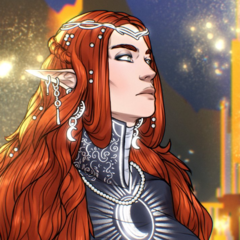 | |
| Languages | Altalar |
| Religion | Estelley (and more) |
Teled, sometimes called Teledden or just Elves, are the most commonly found Elves, and inheritors of an ancient legacy of the Allorn Empire, an Elven Empire that lasted for thousands of years. While their Empire eventually fell, the Teled continued to thrive in politics, art, trade, and magic and continued to be the second most populous people across the world of Aloria, only out-classed by the much shorter-lived Ailor. Teled offer an experience in both the traditional fantasy Elf, but also several variations with unique design alterations.
Physical Characteristics
Teled vary from culture to culture, but can generally be understood to look like traditional Elves with only the Llasada Culture appearing more mer-folk-like with tails, fins, and scales. They have a wide variety of different long/pointed ear shapes, skin tones, and eye colors of practically any variation, except the Solvaan who are always blue-tinted in skin tone. When Teled mix with other heritages, their traits are often dominant, resulting in the typical Half-Elven ear-shapes, but generally they are not dissimilar from the other people of Aloria. Most Teled range from the high five feet, to the high range of six feet, with rare cases just barely hitting seven feet. Of the cultures, the Llasada and Pelyon tend to be the largest, while the Minoor and Bel Hammon tend to be shorter. Most Teled live easily to 400 years old, though some have been known to reach 1000 years old with the assistance of Magic. Generally, we recommend that players keep their characters younger than 150 years old.
Cultures
The Teled Elves have over the millennia divided into Cultures much like the Ailor have, with customs and traditions that transcend nationhood. While once most if not all resided within the (old) Allorn Empire, these Cultures express different ways to play a traditional Elf. Below are depicted various Cultures of Teled, hover your cursor over the text to read more about them. You should choose one dominant culture for your Character.
|
Neo-Allorn, also known as Imperialist Elves, hail from nearly all states and nations that have Elves in them, but notably Val Allornavaal. They continue the pro-Magic and Imperial reclamation of the fallen Allorn Empire and re-establish the new Allorn Empire as a world power. Neo-Allorn are gracious, and poised but capable of deep insidious plotting and deceit. They seek conquest and glory for the Estelley Empresses. |
Amontaar, also known as Diplomatic Elves, hail from the city-state of Amontaar, a center of politics, commerce, and diplomacy. As a nexus between Empires, the people of Amontaar have always had to cultivate social networks and connections, a willingness to listen, and to pragmatically act and mediate to preserve their independence. Amontaar Teled frequently travel to Regalia to do political or economic business, a city like their own. |
|
Finul, also known as Maritime Elves, follow the example of Empress Finell, the patron of Bel Faiaal, who was a renowned sailor and passionate lover enjoying the good life. The Finul have abandoned the haughty and poised Allorn disposition in favor of wild, loud, and excitedly intimate or passionate expressions. The Finul can be found in any port, anywhere the sea touches, including Regalia, a great maritime focused Empire. |
Bel Hammon, also known as Scholar Elves, hail from the similarly named hermit-kingdom, a magic-focused state with power that secures itself through dubious means. The Bel Hammon are mistrusted by the wider world, even denounced as evil immoral warlocks and scientists who don't care for the value of life or morals in their pursuit for magical power. Their magical cabal even reaches Regalia, where they too experiment. |
|
Minoor, also called Communal Elves, hail from Minoor Leria, a land where they have rejected nationhood, empires, and wealth. The Minoor live by the needs and capabilities of its people, a rural paradise from which the locals preach a return to simplicity and cooperative philosophy, and to reject approaching modernity. Many of them proselytize their own ideology in faraway lands, hoping to convince others to abandon violence. |
Solvaan, also called Warden Elves, are descendants of colonists who traveled far east to Solleria, a land shrouded in monster-filled mists, where they eventually integrated into the Ailor Regalian Empire, and became a cornerstone of its political and military landscape. The Solvaan are hunters and mercenaries, protectors of the people, and those who rejected the Allorn Empire's isolation in favor of cooperation with other peoples. |
|
Llasada, also called Cutthroat elves, are feared across the high seas. They were once Finul but were inspired by Prince Larason to turn away from Estelley worship, and to the Deep Will, an oceanic-horror faith. The Llasada are nearly exclusively pirates, corsairs, and cutthroats, taking from the weak what they can get their hands on, with their might-makes-right philosophy. They have even given their body to the sea as merfolk. |
Pelyon, also called Knightly Elves, are strongly intermingled with the Ailor in the similarly named lands, a chivalric knighthood-obsessed people who worship the concept of might-makes-right and have long abandoned delicateness in favor of brutishness. Their people serve in large mercenary armies, baptized in warfare, while their coin is spent on personal luxuries. The majority serve Regalia in faith and war. |
|
Presenna, also called Priestly Elves, are the cornerstone of the Estelley faith and its clergy, their homeland housing the ecclesiastic colleges and academies where nearly all ordained priests of the faith are trained. Presenna is a land ravaged by centuries of warfare, corsairs, and invasions, the religious population holding strong faith, their defenseless nature giving rise to a reputation for enlightened pacifism. |
Lanlath, also called Avenger Elves, are Elves who fled into Sylvaris as Veilwalkers to escape the evils of the Allorn Empire, where they built their peaceful cities. Their ethics eventually changed, repulsed by the suffering world they left behind and feeling guilt, re-opening the gates of Lathan to act as the moral guidelight of the Elves, using their safe havens as a base from which to attack the Allorn Empire. |
Language and Naming
All Teled Elves use the Altalar language. Even though each of the Cultures has a slight variance in accent or dialect that is distinguishable enough to allow them to be told apart, they are all mutually understandable. Altalar is mostly a fantasy language that borrows verbiage from Spanish, but gives them fantasy flairs by softening consonants and extending vowels. Good examples would be "Adios, Gracias, and Hola", which would for example be changed to "Alïos, Ce'lias, and Äula", but there are no hard rules for this, and it is generally not recommended to translate whole sentences and only use this styling for individual words. Modern Spanish names are also suitable for translating into Altalar naming:
- Example of Male names: Ëasiel (Daniel), Lüsas (Lucas), Näul (Raul), Noveyn (Robert), Äuonshe (Jorge), Lavlo (Pablo), Mancel (Marcus), Sönsalo (Gonzalo), Na'ael (Rafael), A'losso (Alfonso).
- Example of Female names: Samila (Camilla), Isaveyl (Isabel), Sa'alia (Natalia), Siliana (Clara), Fisonia (Victoria), Savniella (Gabriella), Veani (Beatrix), Nassissa (Fransisca), Eyfa (Eva).
- Example of Unisex names: Sil (Gil), Aleycis (Alex), Ëasi (Dani), Eysmeynlea (Esmeralda), Äuimey (Jaime), Monshaa (Morgan), Qüiem (Quim), Feyno (Vero), Savia (Gabi), Cimme (Kim).
Furthermore, Elves who are born in Elven lands, tend to have more complex naming rules. They take a first name for example Noveyn, followed by a middle name Na'ael (for example being named after one's grandfather Na'ael), and finally a surname. This is then added to by the place where this Noveyn Na'ael Selven came from, being the City of Vashaäel by adding Bel- (meaning beautiful) in front of it, so Bel-Vashaäel. Finally, Elves distinguish their current Imperial loyalty at the end of their name as Elasis (Regalia), Alloneï (Allorn), or the name of the country in Elven as seen on the Geography page. So if this family was Regalia loyal, it would be in full: Noveyn Na'ael Selven Bel-Vashaäel Elasis, or just Noveyn Selven in short. If you need help with Elven naming, please make a Ticket on the Roleplay Discord so our more experienced linguists can help you.
Religions
- Estelley: Estelley is the faith of choice for the vast majority of the Teled Elves. Estelley is considered a religion made for and by Elves, and they continue to have very strong connections to all of the Gods regardless of politics.
- Draconism: A small minority of Draconism Teled Elves exist in deep isolation from the other Elves. Historically, most Draconist following Elves followed the Cold March, but a few pockets were unable to, or did not want to leave the Allorn Empire.
- Unionism: A large minority of Unionist Elves exist in Regalia. Large migrant populations of Solvaan and other cultures of Teled Elves have moved to Regalia over the past three centuries, and some even converted to the local faith which does have Elven representation.
- Minor Faiths, Evolism: are represented in small minority groups, largely as a holdover from the Cult days. That being said, the Faith of the Deep Ones is very popular and majority among the Llasada, and has some presence among the Finul.
- Khama, Fornoss: There are virtually no Teled Elves who worship these religions for a variety of cultural and religious reasons. It is not impossible to have worshipers of them, it is just unnecessarily playing on hard mode.
History
Elven history is vast because the Allorn Empire existed for nearly 15,000 years, and most of Teled Elven history is tied to the existence of the Allorn Empire. Below is a simplified timeline (that does not need to be memorized) and purely exists to give you a visual understanding of how the various Elven people relate to each other. If you are interested, their other pages are linked below the image, but not relevant to this page. Elven History is divided into large Eras, which are counted in the Ailor year counting because Elves count years in the Empress' number of years ruled, which is confusing.
The Fire Era
Little is known about the Fire Era, besides the fact that the Teled Elves lived in some form of pre-urbanized pre-medieval-ish society that was either on the boundaries of, or subservient to the Dewamenet Empire of the Asha people. The Presenna and Suvial cultures were also around, though it was believed that the Presenna was a separate branch of Elves who worshiped Leyon and had not yet joined the Estelley Faith. The Suvial were more advanced than the common Teled Elf and existed in some form of early Ganges-Kingdom civilizations level independent from all outside influences.
This era is marked by two major events, the Years of Fire which the Era is named after which describes the wars that Talea, Cemaan, and Sapphora waged on the other Elven Gods to force them all into the same pantheon under their rule. The second major event was the Dewamenet-Allorn War. The Years of Fire have no clear starting date because the Elves did not yet have a formal writing system back then, though it seemingly ended somewhere around 15500 BC, which is also when the Dewamenet-Allorn War started. This name is technically incorrect since the Allorn Empire was proclaimed after the war ended. The Asha maintain a very different historical narration about the War, that is utterly rejected by the Elves. When the War ended, the Empire was proclaimed, and the Calm Era started.
The Calm Era
The Calm era from the Elven perspective has little to no noteworthy events, though some of the largest atrocities committed by the Allorn Elves occurred in this timeframe. Immediately following the Dewamenet-Allorn War, the Teled Elves continued the Pearl Wars, which is not an official continuous war, but a collection of smaller military conflicts that acted more like punitive expeditions to kill large numbers of Asha on the peripheries of the Empire. The Allorn Elves committed numerous genocides during this period, not only against the aforementioned Asha, but many other sentient people of Aloria who were in the way of the Allorn Empire's expansion and ultimately wiped from history. The seeds for the long destruction and decay of the Allorn Empire were founded in the Calm Era, which is when Elven society rose to high prominence in art, culture, wealth, and magical power. The manifest destiny attitude of the Elves caused the subsequent Court Era.
The Court Era
The Court Era is so-named after the intense Court battles and intrigue that waged across the Allorn Empire during this time. The power of the central Imperial House and the Empresses waxed and waned over the years, but during the Court Era it was exceptionally weak, resulting in nearly 6000 years of infighting among the many principalities. The Allorn Empire had become so populous over the past Era, that the Princes now felt comfortable to wage war against each other, resulting in the Allorn Empire fracturing into dozens of smaller fiefs and principalities that routinely invaded each other. They all still obeyed the pageantry of the Allorn Empire as a whole, and raised the Allorn banner, but central authority of the Empress was immensely weak and the Princes often did whatever they wanted. During this time, military culture became more prominent among the Elves, giving rise to the Finul culture. Prince Finell was one of the sons of the Empress who dedicated his life to creating military power, but then also seceded from his own family to found a powerful principality in the south. He eventually reached Godhood in unofficial capacity, but was rejected by the Estelley Pantheon and banished from the allorn Empire, eventually later resurfacing in the Regalian Empire to become a Unionist God for a schismatic belief. The intense infighting and tribalism between the various principalities is what gave rise to the Cult Era.
The Cult Era
The Cult Era is a period that marks a strengthening of central Imperial command. The Empresses regained authority in the Empire and the infighting among the principalities died down, but the unseen war over people's minds intensified much more. Allorn society had been shown the chaos that would prove to be a ladder to power, but agreed in sentiment that wars and endless killing were not the right way. Instead, Elven society started splintering along ideological lines, joining various Cults all promising power. Popular cults were the Cult of Drolan (physical military worship cult), the Cult of Shadows (Evolism/Void worship cult), the Cult of Charnel (Death Worship cult), the Cult of Dregodar (Dragon worship Cult) and the Forlorn Cult (Silence worship cult). While Estelley as a Religion was able to hold the attention of the masses, their seeming increasing boredom with the longevity of Elven lives, and their dissatisfaction with stagnancy in life caused ever-increasing levels of depravity among the Cults. The Charnel Cult for example started practicing necromancy, the Shadows Cult dabbled into sacrifice, and the Forlorn Cult burned down hundreds of libraries and archives, trying to win the information war and being instrumental in destroying much of the records kept from the Fire Era. The Cult Era ensured that the Allorn Empire had become incredibly unstable and ideologically divided, which lent into the Arch Era.
The Arch Era
The Arch Era is marked by a period of explosive violence and the so-called 1000 year long Mage Wars. During this period, Imperial control weakened once more, but would never recover because it was not the Princes, but the Archmages who seized power during this era. The Bel Hammon Elves were at their height, as many of their Magisters waged magical wars against one another for power, artifacts, and fame, and whole parts of the Empire were swallowed into ideological driven mania. Achmages fought on the sides of all Cults, seeking to establish their ideology as superior to all other Cults, and hoping to capture the power of the Empress for themselves. The number of Cults exploded into thew thousands, with just as many disappearing from the historical record as Magic attack after attack wiped them from existence. The Mage Wars are remembered as some of the most critically informative periods for the rest of the world in the modern era. If the Cataclysm and Void Invasions alone were not enough cause for concern, surviving Mage Wars literature and even some first-hand accounts of Mages who are still alive from this period, have lent to a lot of the rhetoric behind Purism and anti-Occult rhetoric across the world. The Mage-Wars ended when Allorn society started rapidly collapsing in the Dark Era.
Two notable events that occurred in the Arch Era that beg specific highlighting, are the Dregodar War and subsequent Cold March, and the appearance of the Yanar. The Dregodar Cult had explosively grown from around 700 BC to 500 BC, due to the real tangible providence that Dragons within the Allorn Empire showed, even if they did not interact with Allorn society at large. Around 500 BC, depending on the narration, the Dregodar Cult attempted to seize power in the Imperial Court as told by the Allorn sources, or were brutally repressed by the Allorn Empire for their religious heresy as told by Isldar sources. This was was in essence a small localized civil war in the east of the Allorn Empire, which resulted in a string of losses for the Dregodar, and their immediate flight from the Allorn Empire ever further north into Ellador that would later be called the Cold March. The Yanar appeared just after the Cold March started, seemingly unrelated, but still likely creating the window for some unseen hand to try and save Allorn society. Yanar became the messengers of the Estelley Gods, particularly Mana, hoping to guide the Teled Elves away from their cultism and magical violence. The Yanar however utterly failed, and were marginalized almost immediately upon their arrival in Aloria from the forests.
The Dark Era
The Dark Era covers the steady collapse of the Allorn Empire. It is often told in history that the Allorn Empire collapsed all in one day during Cataclysm, but this is not true, as the actual collapse was gradual in the 300 years as Elven events are often counted in centuries not weeks. The first to officially declare independence were the Suvial Principalities in 288 BC. It should be noted that the Suvial Elves had already been effectively independent since the year 1301 BC when Empress Ammanleyara died, the only Empress who officially conquered the Suvial Principalities after 400 years of war. Following 40 years of Allorn control, and with the death of the Empress, the Suvial Principalities became independent in all but name, occasionally sending tapestries and gifts to the Empresses of the Allorn Empire with emissaries, but controlling their realms independently.
Soon to follow were the Shadow Cultists who had been mutating and changing into the Kathar on the landmass that would eventually become the Dread Empire. Selvath Elves started raiding the cities close to the forests, the Maquixtl forerunners created more and more separatist provinces in the northern plains, and the Princedoms of Osc'iird were lost to infighting. Towards the end of the Dark Era, the Empresses barely controlled the capital heartland provinces of the Empire, and were able to call upon only token military forces from the other principalities which had effectively started to declare self-rule.
The major events that resulted in the final collapse and destruction of the Allorn Empire, were the sudden surge of Eronidas attacks, and the Void Invasion itself. The Eronidas had already been present on Allorn territory for nearly 900 years, but were mostly held at bay until the city-states unified into one massive military host and pushed further into the Allorn Empire than ever before. At the same time, the Void Invasion commenced in what would eventually become Drowda, wiping out the local Elven populations and the Drovv people, while moving ever south. The last Empress rode her armies north to meet the Void Invasion and was lost in a series of disastrous battles against Demon hosts that could not be defeated. By a stroke of luck, the Cataclysm occurred ending the Void Invasion and forcing all the Demon hosts back into the Void, but the resulting calamity destroyed the Empire's infrastructure.
Cataclysm itself caused mass ecological damage, earthquakes, volcanoes, and tsunamis all ravaging the lands of the Allorn Empire. The modern-day Sundered Lands suffered the brunt of the damage, with huge metropolises swallowed by the sea and the land fracturing. Large landmasses broke off into the sea, and others became uninhabitable, causing the mass death of Elven populations across the Empire. A mysterious event known as the Wildering also ravaged the countryside, particularly in the east, with nature reclaiming many of the cities that the Elves had built, and even their people turning into twisted bark and branch depictions of their former selves in an instant. When the remnants of the Elven armies returned back to the capital, the Eronidas wiped them out in the Last Charge of the Silverhelms, before sacking the capital, destroying the Imperial Palace, and stealing the crown jewels including the Empress's Crown before returning to their newly established frontlines in the north.
The Post & New Era
Following Cataclysm, despite the size of Elven populations, the Allorn Empire was completely gone. Elven states were now fully independent and continues to do diplomacy and often even war with one another like the Allorn Empire had never even existed to begin with. Some states declared themselves true successors, but in often cases, they became little puppets indirectly controlled by either Ailor, Suvial, or Kathar interests that were bubbling on the peripheries. The Elves went from masters of the world, to just being acted upon by the geo-political interests of other people, and this remained largely the same for nearly 300 years as they were invaded, and lands were reclaimed by the Asha and Ailor in turn.
The situation radically changed in the coming of the 4th century after the Cataclysm, when the return of the Goddess Talea among mortals spurred Cemaan and the other Gods into action, and the Allorn Empire was re-proclaimed with Talea the first Empress being made the Eternal Empress. Sapphora remained stagnant in Amontaar, unwilling to expand the Allorn Empire, but Cemaan and Talea immediately went about re-establishing the Allorn Empire in record time, reclaiming as much as 60% of its original territory. Conflict immediately emerged with the Kathar, Eronidas, Ailor, Asha, Suvial and even some of the still fiercely independent principalities to the southeast, meaning the Allorn Empire was chafing on all sides with enemies.
Many Elves migrated out of the Empire fleeing the violence, but others had also long established themselves in other countries, like the Regalian Empire, or the Queendom of Ithania where Elves and Ailor lived peacefully together. Many of the distant colonies had become full fledged nations, intent on preserving their independence, and generally speaking only the Neo-Allorn Teled Elves were interested in re-creating the conditions of their total global hegemony. Now, much of the world's politics is dominated as a contest between the Ailor Regalian Empire, and the neo-Allorn Elven Empire.
